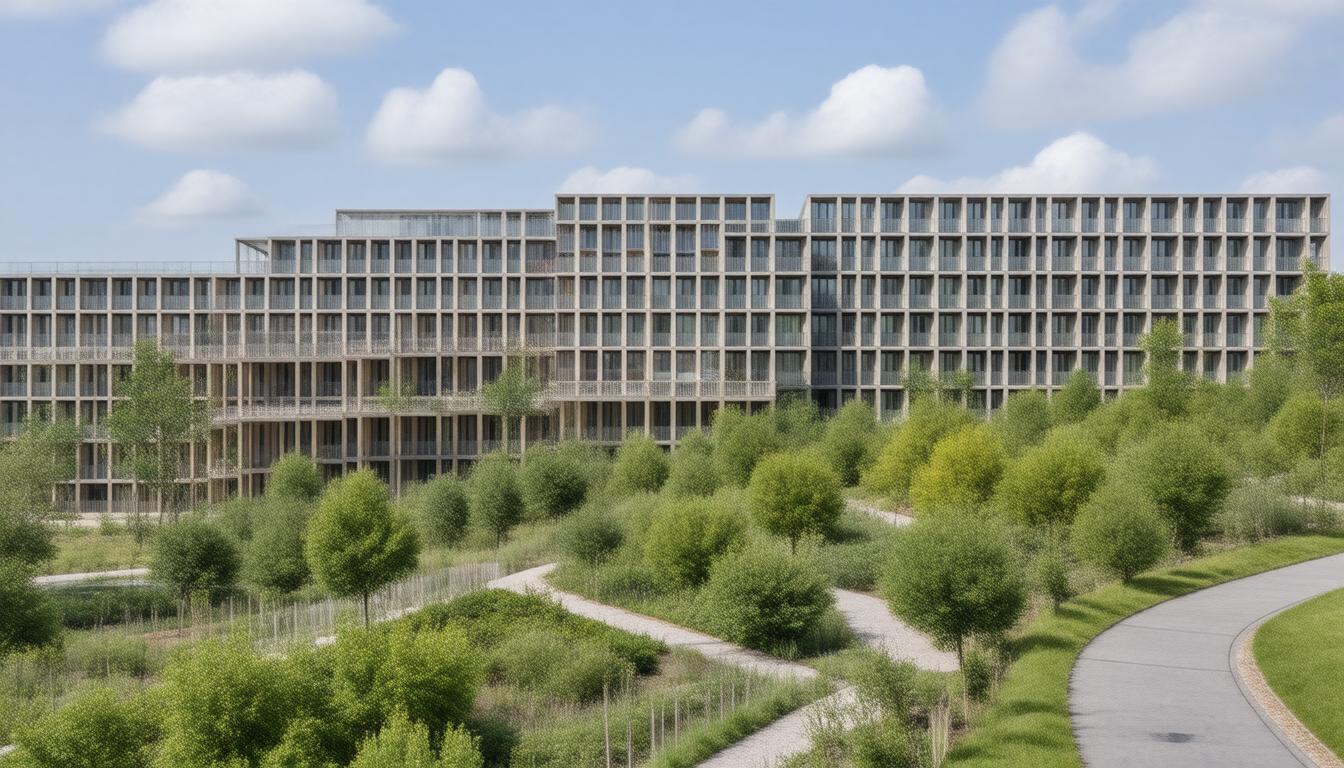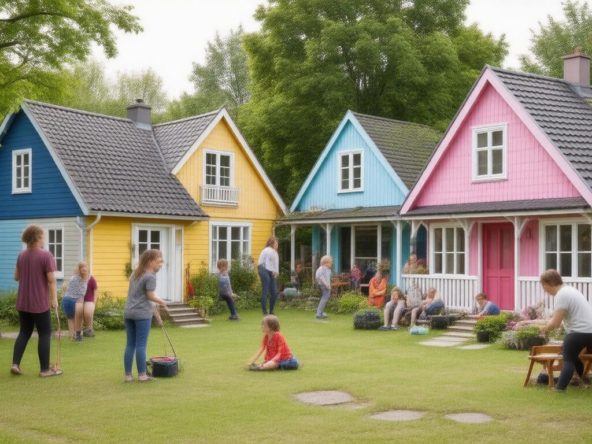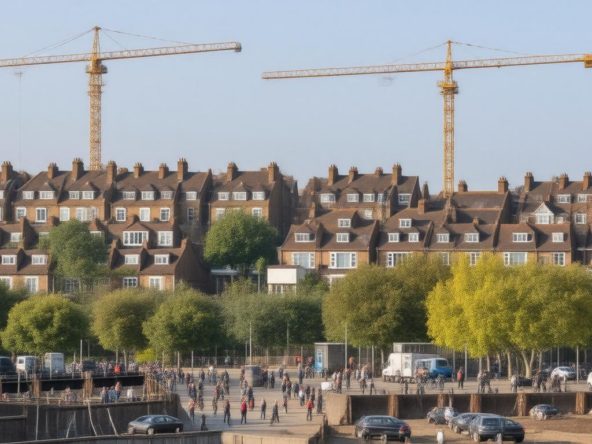The housing market in the UK is undergoing a significant transformation, highlighted by the rise of the Build-to-Rent (BTR) sector. This innovative approach to residential development aims to meet the growing demand for rental properties, particularly among younger generations who are increasingly favouring flexibility over ownership. In this article, we will explore the fundamentals of the Build-to-Rent model, its rapid growth and the benefits it offers to tenants. Additionally, we will assess the impact of BTR on the broader housing market and examine the challenges it faces as it seeks to establish itself as a viable alternative to traditional forms of housing. Finally, we will consider the future of Build-to-Rent in the UK and what it might hold for renters and investors alike.
Key Takeaways
- Build-to-rent is transforming the UK housing landscape by providing purpose-built rental accommodations.
- The sector has seen significant growth, driven by increasing demand for flexible living arrangements.
- Tenants benefit from high-quality amenities and management services typically associated with build-to-rent developments.
- The rise of build-to-rent could help alleviate housing shortages and stabilise rental prices in the market.
- Challenges such as regulatory hurdles and funding remain, but the future of build-to-rent looks promising in the UK.
Introduction to Build-to-Rent
Build-to-rent (BTR) is a burgeoning segment within the UK housing market, designed specifically for rental purposes rather than sale. This development model has gained traction over recent years, as it offers a solution to the pressing housing shortage while catering to the evolving needs of renters. BTR properties typically feature high-quality amenities and professional management services, appealing particularly to young professionals and families seeking flexibility without the commitment of buying a home. The increasing demand for rental housing, alongside the rise of a more transient lifestyle, has catalysed significant investment in this sector, making build-to-rent a critical component of urban regeneration strategies (Smith, 2022). Consequently, developers are focusing on creating vibrant, community-oriented environments that enhance the quality of life for residents while contributing to sustainable urban growth.
The Growth of the Build-to-Rent Sector
The build-to-rent (BTR) sector has witnessed substantial growth in recent years, driven by an increasing demand for rental housing amidst ongoing affordability challenges in homeownership. The concept of BTR focuses on purpose-built residential developments designed for the rental market, offering amenities and services akin to those found in luxury apartment complexes. This sector not only addresses the needs of a diverse demographic, including young professionals and families seeking flexibility, but it also provides a stable investment opportunity for developers and institutional investors (McCulloch, 2021). According to a report by Savills (2022), the UK’s BTR sector is expected to reach a significant milestone, with over 300,000 homes currently in the planning or development stages. This escalation is parametric to the shift in lifestyle preferences post-COVID-19, where individuals are increasingly valuing urban living with community-oriented environments that BTR developments typically offer. Moreover, the growth of BTR is underpinned by broader economic factors, including the rise of remote working and the evolving nature of family structures, highlighting the need for adaptable housing solutions (Fitzgerald, 2023). As a result, stakeholders across the real estate sector are focusing their strategies on leveraging this innovative housing model to meet contemporary urban housing challenges.
‘The future belongs to those who believe in the beauty of their dreams.’ – Eleanor Roosevelt
Benefits of Build-to-Rent for Tenants
The build-to-rent (BTR) model presents numerous advantages for tenants, significantly enhancing the rental market experience. One of the most notable benefits is the provision of high-quality, professionally managed residential spaces that are often designed with tenant needs in mind, promoting community and comfort (McClymont, 2021). BTR properties typically feature modern amenities such as gyms, communal spaces, and managed services, which enhance the overall living experience (The UK Apartment Association, 2022). Additionally, tenants often enjoy greater security and stability, as BTR developments are less susceptible to market fluctuations and provide longer lease terms compared to traditional rentals (Savills, 2023). This arrangement fosters a sense of community, often encouraging tenants to participate in events and activities within their buildings, thus nurturing social interaction and ties (Pawson & Croudace, 2020). Furthermore, many build-to-rent schemes are located in urban areas close to essential services and transport links, making them more accessible and convenient for daily living (Homeless Link, 2021). Overall, the build-to-rent model not only meets the demand for rental housing but also substantially improves the quality of life for tenants through enhanced services and community-oriented living.
Impact of Build-to-Rent on the Housing Market
The impact of the build-to-rent (BTR) model on the housing market has become increasingly significant in recent years, particularly in urban areas where the demand for rental properties is surging. This approach involves the construction of residential buildings specifically intended for long-term rental, rather than for sale, thereby creating a distinct segment within the real estate market. With the rise of BTR developments, cities are witnessing not only an increase in rental stock but also an enhancement in the quality of rental accommodation. BTR schemes often include amenities such as gyms, communal spaces, and professional management services, which differentiate them from traditional rental options (Hughes, 2021). Furthermore, this model has been linked to stabilising rental prices, as it introduces more inventory into the market, thus alleviating some of the pressures associated with housing shortages (Royal Institution of Chartered Surveyors, 2020). Additionally, the focus on sustainable development within BTR projects aligns with broader governmental objectives to improve housing quality and accessibility, thereby positioning this model as a potential solution to the ongoing housing crisis (Baker, 2022). As more investors turn their attention to BTR, its influence on housing availability and market dynamics is expected to grow, shaping the future landscape of urban living.
Challenges Facing the Build-to-Rent Model
The build-to-rent (BTR) model has emerged as a significant player in addressing the housing crisis in many urban areas, yet it faces several challenges that hinder its potential growth and sustainability. One of the primary issues is the regulation surrounding the BTR sector, which varies widely between jurisdictions and can create complexities for developers (Wheeler, 2022). The need for significant upfront capital also poses a barrier, compelling developers to seek varied financing options without guaranteed returns in an unpredictable property market (Smith, 2023). Furthermore, design and quality concerns arise as the BTR model often prioritises cost-effectiveness over long-term liveability, which can result in subpar living conditions that deter potential tenants (Jones, 2023). Finally, competition with traditional rental markets can create an oversupply in certain areas, leading to decreased rental yields and stifled investor interest in the BTR approach (Adams, 2022). Addressing these challenges will require stakeholders across the industry to engage in collaborative efforts to create more robust regulatory frameworks, investment strategies, and property standards.






